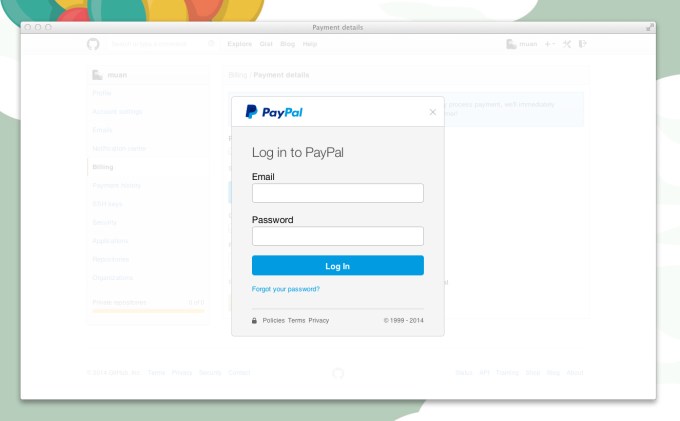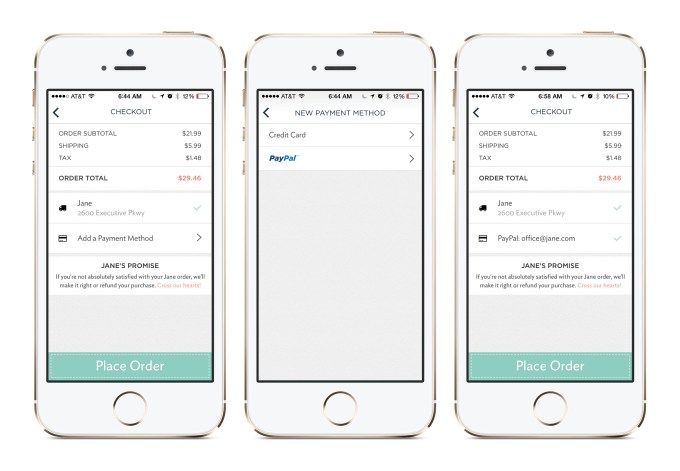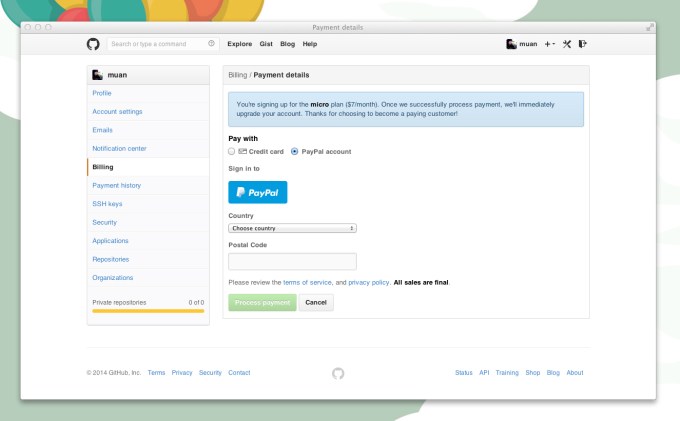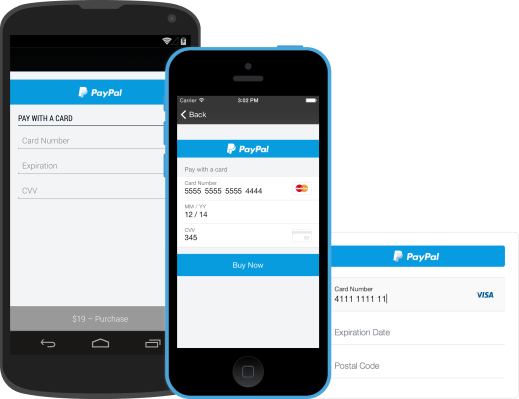Payments gateway Braintree is making its first significant product announcement since its acquisition by PayPal last year, with the launch of a jointly developed Braintree SDK (software development kit) for developers. The new toolset is being called the “Braintree v.zero SDK” to indicate how it’s been rebuilt from the ground up, and is said to be easier and quicker to integrate within web, mobile web and native mobile applications.
Braintree previously offered SDKs for developers looking to accept payments within their applications, and this is meant to replace those earlier versions as the new Braintree experience.
While the standout feature, of course, is the inclusion of PayPal as a payment method, the new SDK has actually been built in such a way that turning on or off PayPal, as well as any future payment methods Braintree chooses to integrate, will be as simple as flipping a switch.

As Braintree CEO Bill Ready explains, once the new SDK is installed, developers will be able to simply toggle a setting within their Braintree control panels to begin supporting PayPal. This, he says, helps to “future proof” the technology, as the company plans to offer more payment methods in the months ahead.
“We have a huge international business, and non-card payment methods are very important in a lot of countries internationally. So [this new SDK offers] a seamless path for us to now add those to these buying experiences so developers and merchants don’t have extra work to do,” says Ready.
Asked if this change would also allow Braintree to easily add support for cryptocurrencies, like bitcoin, in the future, Ready says “you’re on the right path,” but notes the company has nothing to announce on that front at this time. (Bitcoin, and all the other alt-coins, can be seen as something of a competitor to PayPal as an alternative way to pay online, so it would be odd to see support for such a thing in a PayPal-owned product. More likely, the “non-card” payment methods being planned are those that allow international customers to pay online via cash or direct bank debits instead of credit cards.)

The new SDK also introduces a “drop-in” user interface that makes it easier for early-stage startups to use the Braintree service without a lot of extra integration work. However, for larger merchants, the ability to fully customize the SDK to make the Braintree checkout flow appear like a native part of the merchant’s own site or app is still supported.
The SDK now takes about 15 minutes to install and configure, where before it took around 30, notes Ready.
“But the really big step forward is what you get for that 15 minutes,” he adds. Previously, developers would have to build their checkout experiences for iOS, then for Android, then for web and mobile web, Ready explains. “That’s many weeks worth of work for the developer. We’ve now said we’re eliminating all that…plus we’re adding the PayPal integration.”
Over the past several weeks, a number of beta testers have been using the v.zero SDK, including GitHub, ParkWhiz, Chargify and Jane.com – the latter of which reports that after a week of integrating with the new APIs, more than 11 percent of its payment volume is now comes from PayPal. Twilio is planning to integrate the SDK in the weeks ahead, as well.

Braintree is today making the SDK publicly available to its tens of thousands of merchant customers. Other Braintree customers include Airbnb, Angry Birds (Rovio), Uber, HotelTonight, Fab, LivingSocial, OpenTable, Poshmark, TaskRabbit, Animoto, Basecamp, CloudFlare, and more.
At the time of its $800 million acquisition, Braintree reported $12 billion in total volume, and more than $4 billion in mobile. As of last quarter, the company announced 25 percent quarter-over-quarter growth, and is now enabling one-touch buying for 60 million consumers. On the Venmo side of the business, Braintree says it’s doing more than $1 billion in annual volume, and that’s growing more than 60 percent quarter-over-quarter.
